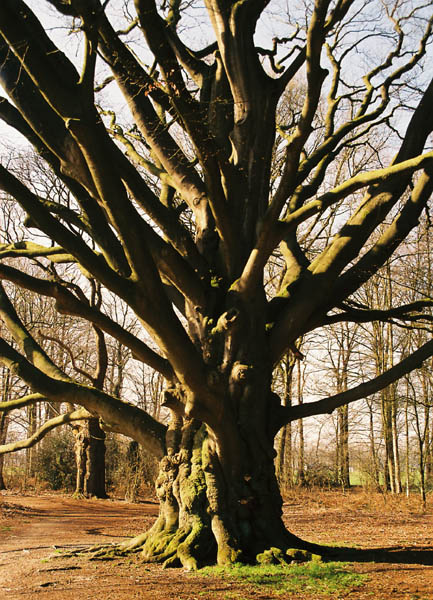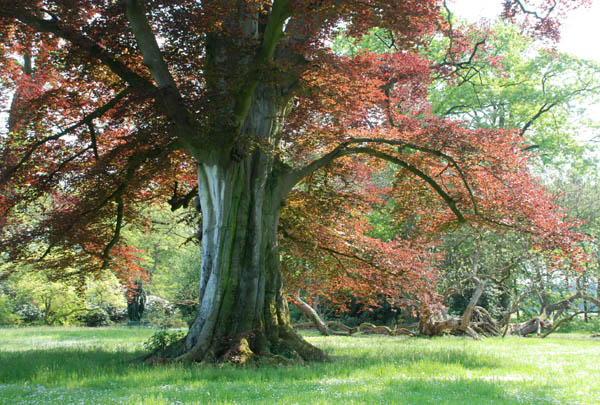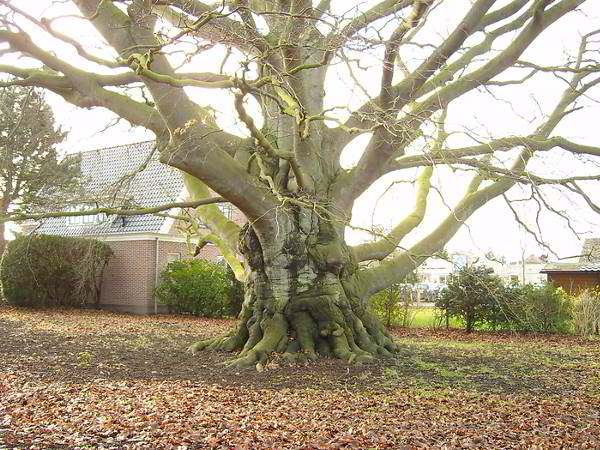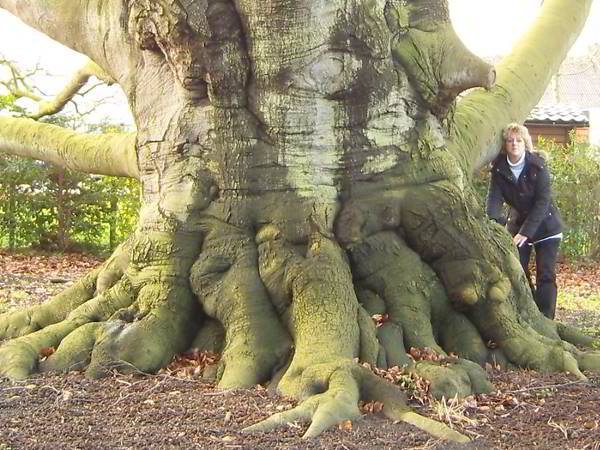|
Jenny, Ed and ENTS,
Copper Beeches are not a species, but a cultivar of the European
beech *Fagus
sylvatica* which is most often selected by grafting upon rootstocks
of the
common European beech. There are also seedlings. In Holland there
are still
many large copper beeches (also called purple beech) of known
planting from
the beginning of nineteenth century. They become quite big, as a
open grown
tree up to 26 feet cbh and 60 to 110 feet tall with spreading
crowns, in
alleys and forest up to 125 feet tall.
Many copper beeches in Holland (compared to New England - USA
cool summers
and very mild winters) are attacked by fungi when about 150 - 200
years
old. A factor in that is often lowering of the groundwater table in
our flat
country because of modernization of agricultural areas. Few become
much more
than 200 years old. Of the normal green European beech some become
older.
Recently, in 2006, an alley with trees planted in 1776 was cut.
Several of
these had problems with fungi, some had fallen spontaneously and
were
hollow. Some of the cut trees (for control I have counted the year
rings, they
were indeed 230 years old) were sound and could have live some time
more.

Here are photos of some big copper beeches: beuk Den Bramel: cbh
24½ feet,
height 86 feet, planted 1810 - 1820 according to the owner. It is
now dying.

Slangenburg: cbh 23 feet, height 90 feet, planted around 1800,
now near the
end of its life.

Beuk Doesburg: cbh of the rootstock is 26 feet, as you can see much
bigger
than the graft, wich is only 19 feet around, height 86 feet. This
tree was
planted at a cemetery in 1829 and is still rather healthy.

 Beuk
Blokker is
also very big, 26 feet cbh and still very healthy. Its date of
planting I do
not know.
Jeroen Philippona
The Netherlands
Continued
at:
|